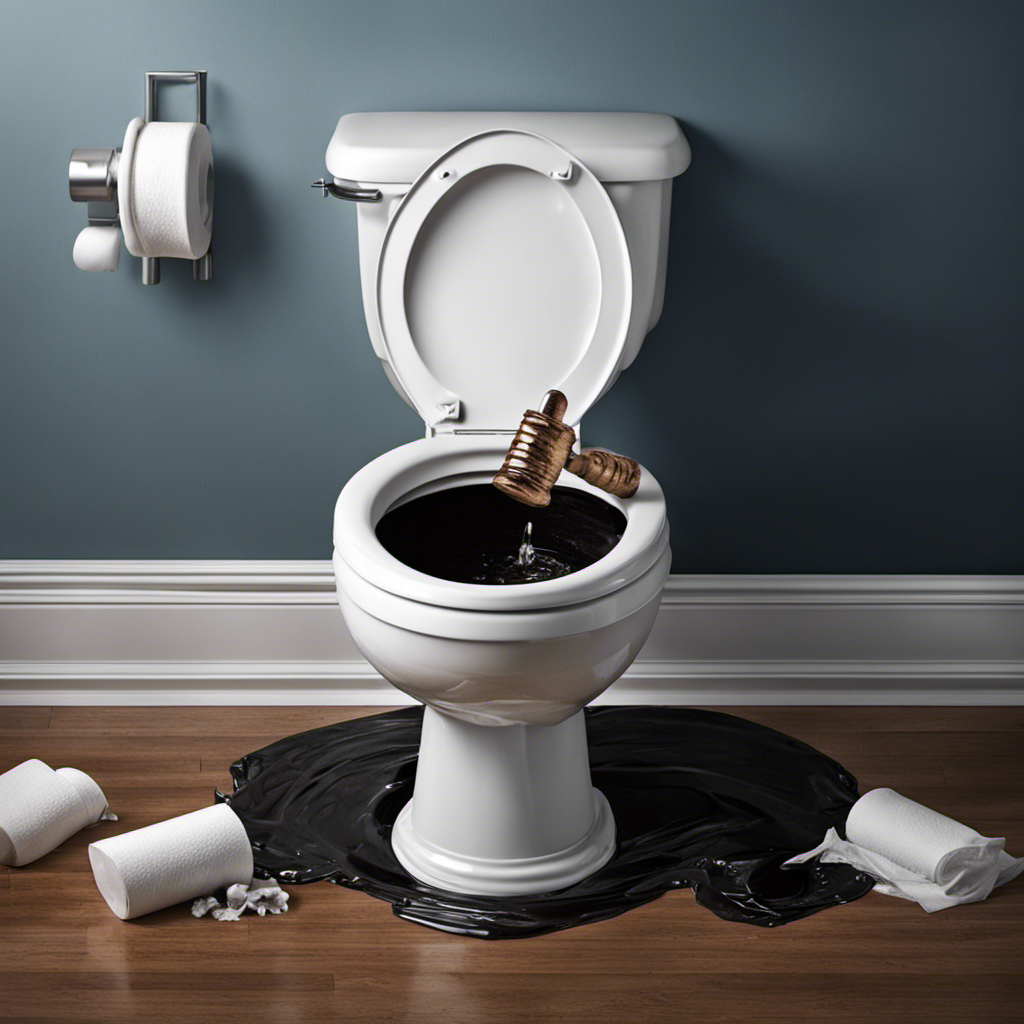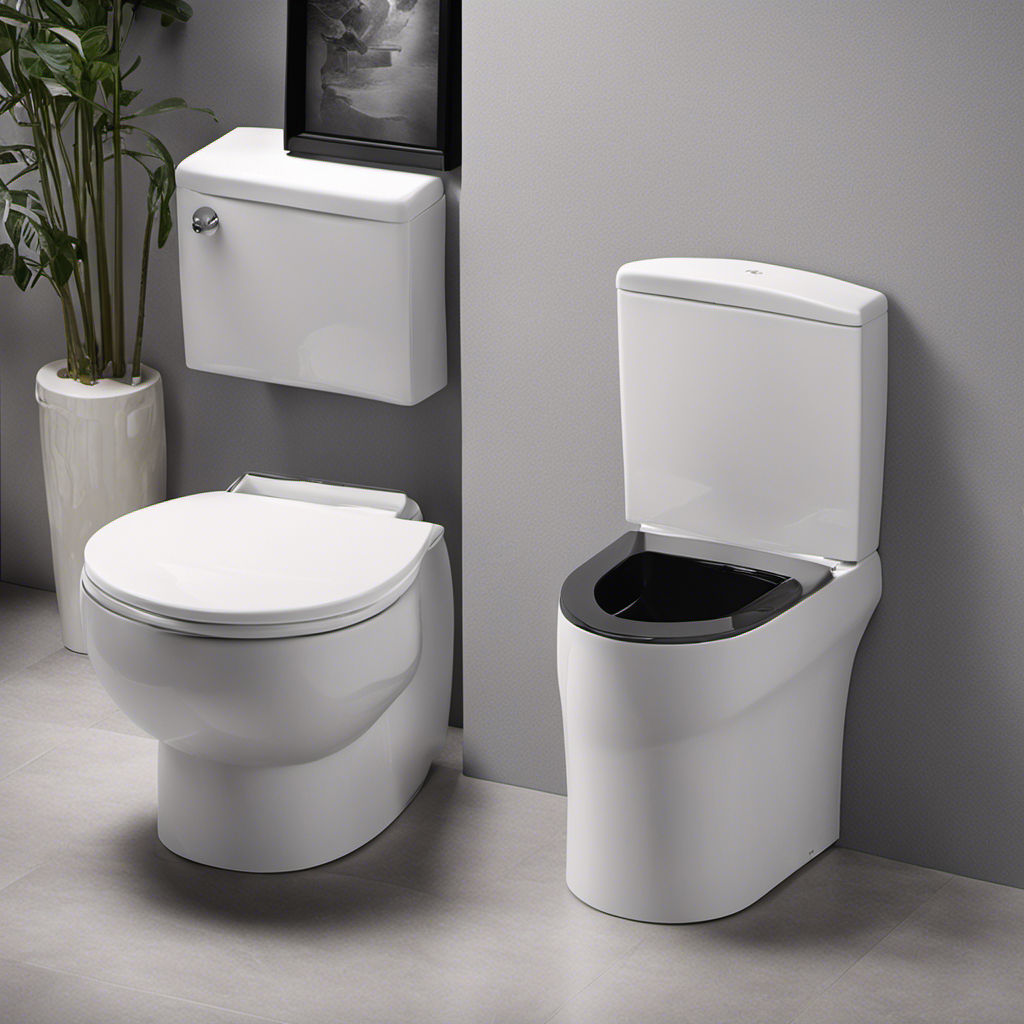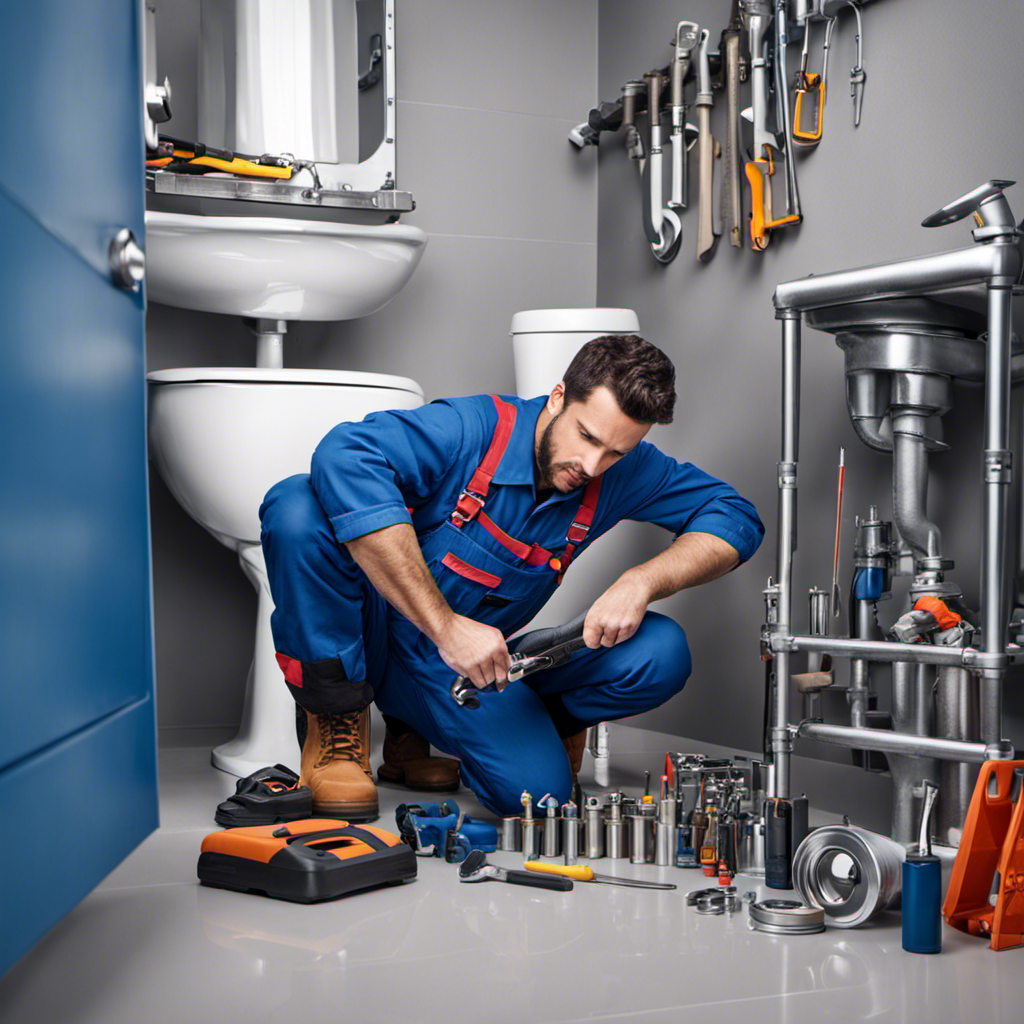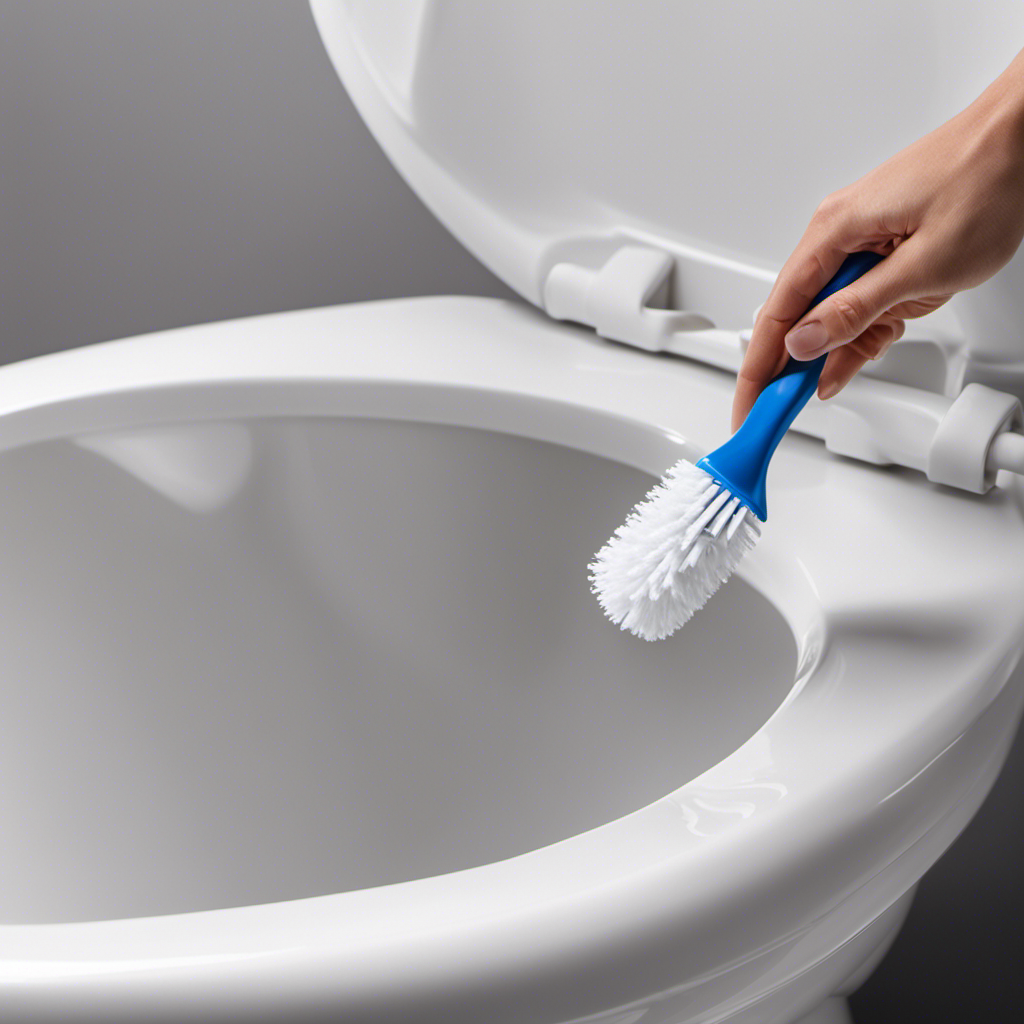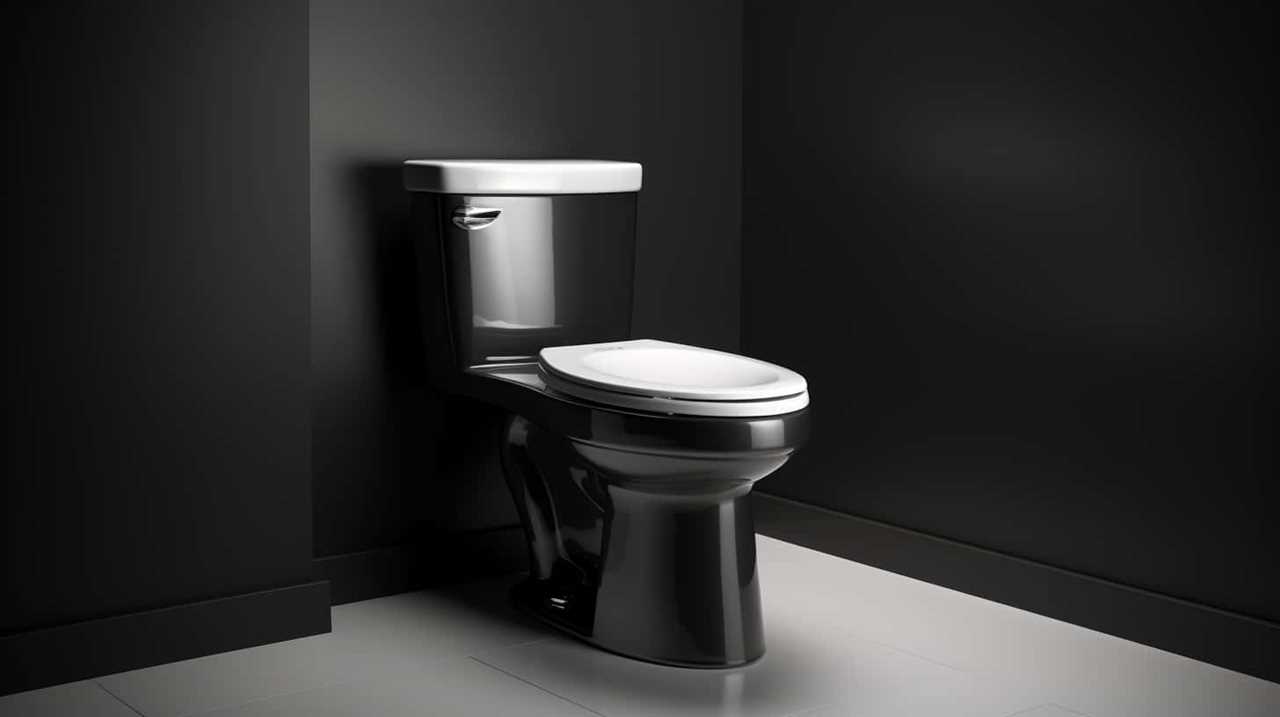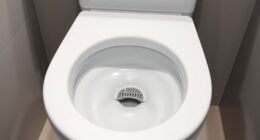Hey there! Ever had that frustrating moment when your toilet decides to get clogged at the worst possible time? Trust me, I’ve been there too.
But fear not! In this article, I’m going to share with you my tried-and-true method for unclogging a toilet. With just a few simple tools and a little bit of know-how, you’ll be able to tackle this pesky problem with ease.
So let’s dive in and get that toilet flowing smoothly again!
Key Takeaways
- The tools and materials needed to unclog a toilet include a plunger, bucket, drain snake, and proper size for the toilet’s plumbing.
- The step-by-step unclogging method involves removing debris, using a plunger technique, using hot water and dish soap, and using a plumbing snake if necessary.
- Prevention tips to avoid clogging include proper disposal, mindful flushing, eco-friendly alternatives, toilet maintenance, and the environmental benefits of using eco-friendly alternatives.
- Common mistakes to avoid include flushing non-flushable items, using excessive toilet paper, improper grease disposal, improper flushing habits, and using incorrect unclogging methods.
Tools and Materials Needed
To unclog your toilet, you’ll need a plunger and a bucket. These are the basic tools you’ll need to tackle most clogs.
The toilet plunger is specifically designed for this task, with a rubber cup that forms a seal around the drain hole.
The bucket is useful for holding water or catching any overflow during the unclogging process.
In some cases, you might also need a drain snake. This flexible tool can reach deeper into the plumbing system to dislodge stubborn clogs. It’s important to choose a drain snake that is appropriate for your toilet’s plumbing size.
Having these tools on hand will ensure that you are prepared to tackle any toilet clog effectively and efficiently.
Step-by-Step Unclogging Method
Start by carefully removing any visible debris from the toilet bowl before attempting to unclog it. This will make it easier to determine the cause of the clog and potentially resolve it without any further steps. However, if the clog persists, there are alternative unclogging methods you can try before resorting to professional plumbing services.
Here are three effective approaches:
-
Plunger: Use a plunger specifically designed for toilets. Place it over the drain hole and firmly push down, then pull back up in a rapid motion. Repeat this process several times to create a suction that can dislodge the clog.
-
Hot Water and Dish Soap: Boil a large pot of water and add a generous amount of dish soap. Carefully pour the mixture into the toilet bowl and let it sit for a few minutes. The heat and soap can help break down the clog, making it easier to flush away.
-
Plumbing Snake: A plumbing snake, also known as a drain auger, is a flexible tool that can be inserted into the toilet drain to break up the clog. Insert the snake and twist it clockwise, pushing it further into the drain until you feel resistance. Then, slowly pull it out, allowing it to catch any debris along the way.
Prevention Tips to Avoid Clogging
Make sure you regularly dispose of sanitary products and other non-flushable items in the trash to prevent clogging. Proper toilet maintenance is crucial to avoid any plumbing mishaps.
One important aspect of maintenance is being mindful of what you flush down the toilet. Flushing items like diapers, wipes, and feminine hygiene products can lead to blockages in your pipes. It’s essential to educate everyone in your household about what can and cannot be flushed.
Additionally, using eco-friendly alternatives to chemical drain cleaners is a great way to maintain your toilet’s health. These alternatives, such as baking soda and vinegar, are not only effective but also better for the environment.
Common Mistakes to Avoid
When using your toilet, remember to be mindful of what you flush down to avoid common mistakes that can lead to clogging. Here are three common mistakes to avoid:
-
Flushing non-flushable items: Many people make the mistake of flushing items like baby wipes, paper towels, or feminine hygiene products. These items do not break down easily and can cause blockages in your pipes.
-
Overusing toilet paper: While toilet paper is flushable, using excessive amounts can still lead to clogs. Be mindful of the amount you use and consider using less if you notice frequent clogs.
-
Pouring grease down the toilet: Grease may seem harmless when it’s in a liquid state, but it solidifies as it cools down and can cause major clogs in your pipes.
To avoid these common mistakes, remember to only flush toilet paper and bodily waste. If you do encounter a clog, there are proper plunging techniques and natural remedies that can help unclog your toilet.
Additional Troubleshooting Tips
If you’re experiencing a clog, one helpful tip is to try using a plunger to clear the blockage.
Before using a plunger, it’s essential to understand the causes of toilet clogs. Common culprits include excessive toilet paper, foreign objects, or a build-up of waste and debris.
When using a plunger, make sure to have a good seal between the plunger and the drain opening. Press down gently and then pull up forcefully, creating suction to dislodge the clog. Repeat this motion several times until the water starts to drain properly.
Be patient and persistent. If the plunger doesn’t work, you may need to try other methods like using a toilet auger or contacting a professional plumber.
Frequently Asked Questions
How Long Does It Usually Take to Unclog a Toilet Using the Step-By-Step Method?
Usually takes about 20-30 minutes to unclog a toilet using the step-by-step method. Avoid common mistakes like using too much force or not using a plunger correctly. To prevent clogs, avoid flushing non-flushable items and use a toilet paper in moderation.
Can I Use Any Type of Plunger to Unclog My Toilet?
Yes, you can use plunger alternatives to unclog your toilet. However, it’s important to avoid common mistakes when using a plunger, such as not creating a proper seal or using too much force.
Is It Safe to Use Chemical Drain Cleaners to Unclog a Toilet?
Using chemical drain cleaners to unclog a toilet can be risky. They may not work effectively and can cause damage to your pipes. It’s safer to use natural drain cleaners, which can be just as effective.
What Should I Do if the Clog Is Not Resolved After Following the Step-By-Step Method?
If the clog persists even after trying the step-by-step method, there are alternative solutions to consider. You can try using a plunger or a toilet auger. If those fail, it might be time to call for professional plumbing services.
Are There Any Alternative Methods to Unclog a Toilet if I Don’t Have the Tools Mentioned in the Tools and Materials Needed Section?
Alternative methods and DIY solutions can be used to unclog a toilet if the necessary tools are not available. It is important to explore options such as using hot water, a plunger, or a homemade drain cleaner.
Conclusion
In conclusion, unclogging a toilet may seem like a daunting task, but it can be easily accomplished with the right tools and method. Remember, prevention is key to avoiding future clogs. By implementing simple habits like using less toilet paper and avoiding flushing non-flushable items, you can save yourself the hassle of dealing with a clogged toilet.
Just like maintaining a clear path in life, keeping our toilets unclogged allows for a smooth flow of things. So grab your plunger and tackle that clog head-on because a clear and functional toilet is worth the effort.
